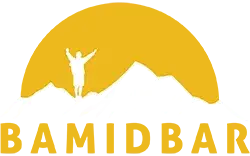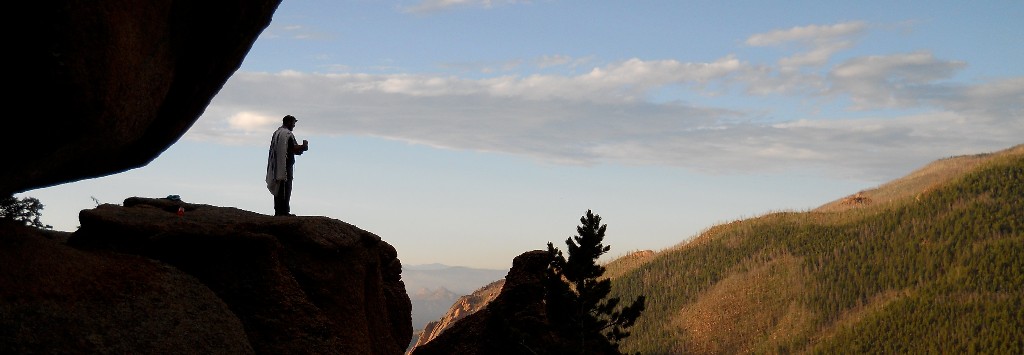As I’ve been working on the position description for our Spiritual Counselor / Rabbi in Residence role, many people have asked me to further explain what makes our program distinctly Jewish. Outside of being kosher and Shabbat-observant, how do we integrate Judaism throughout the treatment process?
The challenge posed by this question is that the clinical intervention, wilderness experience, and Jewish curriculum are not independent elements. Rather, a Jewish framework is used to explore therapeutic concepts, and the wilderness and group environment provide the opportunity for experiential application of those ideas. Today, I want to use this blog to better help you, the reader, understand how Judaism provides a framework for a student’s progression through the program.
PROGRAM PHASES
Phase 1: Hachana –
Throughout your time at BaMidbar, you will work through program phases. The five phases are:
- Hachanah – Preparation
- Kavanah – Intention
- Yirah – Awe
- Kesher – Connection
- Tahalich – Process
The work you do within these phases is meant to enrich your time at BaMidbar and you guide you through a journey of personal reflection and growth. This first phase, Hachanah, is meant as an orientation to BaMidbar. Hachanah means preparation, and just as the word implies, your time in this phase is meant to prepare you for the journey to come.
A Journey into the Wilderness
In Torah portion Beshalach, the Israelites reach the Red Sea and cross from Mitzrayim, Egypt, into the Midbar, the wilderness. As Moses prays, the Israelites weep, and the Egyptians pursue, an unlikely hero steps forward. The Talmud tells us that Nachshon ben Aminadav walks into the sea, not knowing what the future holds, but knowing that he cannot return to the slavery of Egypt. As Nachshon moves forward, taking a leap of faith, the sea parts and a pathway emerges. In the Talmud, God speaks to Moses saying, “There’s a time for prayer and a time for action.” Moses had prayed, and nothing happened. But a young and unknown man took a leap of faith, stepping into the sea, and embraced the infinite possibilities that lay before him, rejecting the constraints of his past.
At BaMidbar, each of our students is a Nachshon, initiating their own leap into the unknown to embrace a future full of infinite possibilities. It is hard to leave challenging situations. As challenging as the present may be, it provides a source of comfort in its familiarity. By coming to BaMidbar, you are taking that chance, saying, “Even if I don’t know where this path will take me, I know I can’t stay here.” It is not because of Moses that the sea parts and the Jews begin their journey to freedom. It is the unassuming, the Nachshons of this world, who change the future of the Jewish people forever. Similarly, as a student at BaMidbar, you are brave, the unlikely hero of your personal narratives as you dive into a new experience and environment, your personal journey through the midbar, the wilderness.
Phase 2: Kavanah -כונה – Intention
Setting Intentions
Kavanah literally means intention. In Judaism, it is most often used when discussing the purposefulness a person brings to prayer. At BaMidbar, our program begins with a focus on kavanah. To truly make the most of the BaMidbar experience, students must understand why they are in the program, what they want to get from it, and which part of themselves they are bringing to the process. Curriculum topics include: self-reflection, goal setting, mindfulness, tefillah
Phase 3: Yirah – יראה – Fear and Awe
Overcoming Fears and Inspiring Awe
Yirah, often translated as fear, also means awe. Our students will explore fear and awe in the context of a safe environment and supportive community. They will explore their fears and the role those fears play in daily living. From this, they will build tools to better transform the visceral state of fear into reflective, spiritual opportunities for growth. Curriculum topics include: emotional recognition, positive emotional expression, overcoming adversity, Heschel’s concept of radical amazement, building self-efficacy and resilience
Phase 4: Lelechet -ללכת- The Process
Getting from Point A to Point B
Lelechet, which literally means to walk, can also be seen as a process. In my lastblog post, I mentioned that resilience is not some magical trait that’s determined at birth. It is a learned ability that takes time and practice. Our processes – the structures and habits we have in place – play a strong role in building resilience and keeping us moving in our intended direction. It’s not enough to know where we want to go; we also must have an idea of how we want to get there. Curriculum topics include: 12 Steps in Jewish framework, mindfulness and meditation, relapse prevention strategies, positive coping skills
Phase 5: Ahava – אהבה – Love
Caring and Compassionate Relationships
The Hebrew word for love, ahava, shares a root with both ahav, to nurture, andy’hav, to give. Through the lens of ahava, students will explore the multifaceted nature of our relationships and what it means to love the self and to have caring and compassionate relationships with others. They will apply this concept to better understand family dynamics and one’s relationship with the self and others. Curriculum topics include: conflict management, family dynamics, communication, active listening, trust, self-confidence, self-care, decreasing shame and stigma
Phase 6: Kehilla -קהילה – Community
Social Support Structures
In Judaism, community is not a luxury; it’s a necessity. So much in Jewish life requires a minyan – a gathering of ten Jewish adults – because in Judaism it’s understood that it is not good for one to be alone. Both joy and sorrow are meant to be shared. Through a focus on kehilla, students will explore the role of the peer group in mental wellness as well as strategies for building and sustaining positive social supports. Curriculum topics include: peer relationships, support structures, healthy activities and outlets, aftercare planning, leadership skills, independence/interdependence
Phase 6: Avodah – עבודה – Work and Service
Becoming a Contributing Member of Your Community
BaMidbar’s program will close with a focus on service to others and the community. Students will explore what it means to them to be a contributing member of their community, working with their therapist and family on transition plans. Social action will be explored through a Jewish framework, including the connection between social action and whole health wellness. Curriculum topics include: transition planning and preparation, career and academic goal setting, civic engagement, tikkun olam, leadership skills, values-based actions, autonomy
We need you to help us build this curriculum to its full potential!
While I have a love for the wisdom Judaism can bring to any situation and a passion for experiential, outdoor learning, I cannot create this curriculum alone. To aid in this endeavor, we are hiring a Spiritual Counselor / Rabbi in Residence. Please share the position description through your networks. Contact me atjoryh@ramahoutdoors.org if you are interested in helping BaMidbar develop this curriculum in a formal or informal capacity! We are also hiring a Clinical Director, and appreciate you sharing the position description through your networks.
*Note: In 2010, Rabbi Sarah Shulman, Camp Director of Ramah in Northern California first explored some of these concepts in the curriculum she developed for Ramah in the Rockies’ inaugural summer. Her curriculum focused on Yirah, Lelechet, Kehilla, and Avodah, and inspired the above curriculum outline.

